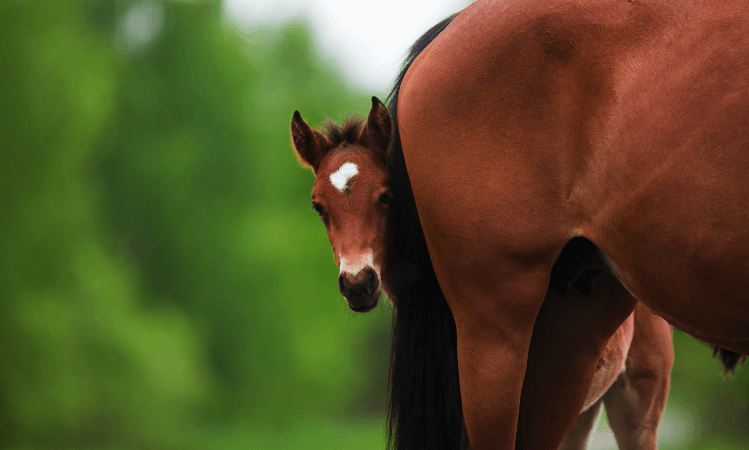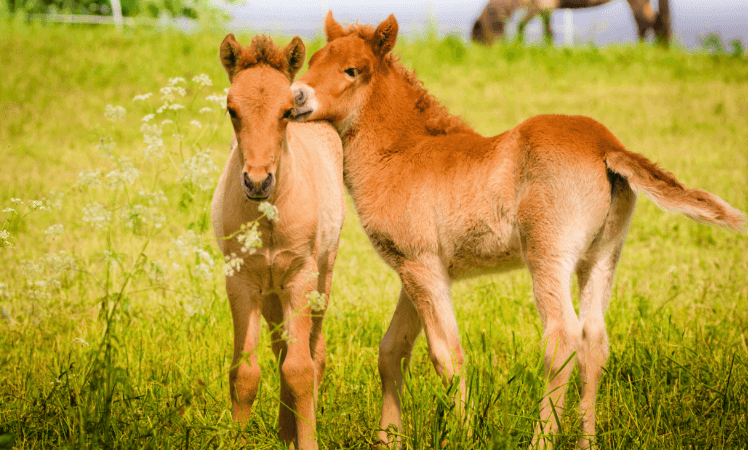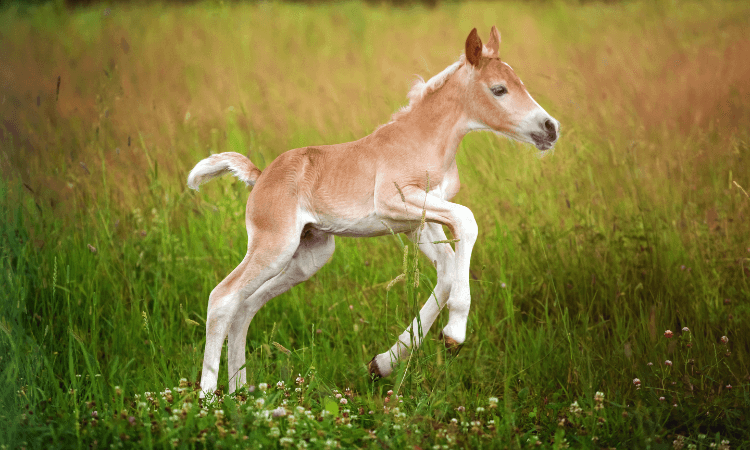Friday 30th July, 2021

Is your mare in foal? We wouldn’t be too surprised if you genuinely don’t know. A female horse’s gestation period lasts about eleven months – and for the first few months of those, the horse might not show any immediately discernible signs of pregnancy.
As wild horses can breed, carry and deliver foals on their own, you might not be worrying too much about whether or not any mare you own is in foal. However, by detecting when they actually are, you can help ensure the pregnancy goes without a hitch.

There are a fair few myths about how to judge whether a horse is pregnant. For example, you might have been told that a mare is pregnant if she shakes just her head and neck rather than her whole body, or if she acts uninterested in stallions – in other words, doesn’t seem to be “in heat”.
As with many myths, there’s a certain degree of logic to these theories. For example, it’s theorised that a shake-averse mare is trying to avoid shaking her foal. Meanwhile, it would make sense for a mare not to get flirty around a male horse if she is currently pregnant.
However, neither of these methods would enable you to tell for definite whether there’s a foal growing in that mare’s belly – which, we should add, might not look particularly distended even many months into the pregnancy. What you really need, then, is to arrange an ultrasound scan.

An ultrasound scan would be the only way you could confirm your mare’s pregnancy for definite. You should ask a veterinarian – ideally one specialising in equine reproduction – to perform this scan approximately fourteen to eighteen days after you started breeding the mare.
You might still be tempted to postpone the scan for several months, as this would give you time to look out for other possible signs that your horse is pregnant. After all, usually, visible signs of horse pregnancy do not emerge until at least six months following conception.
On the other hand, you might prefer to be “better safe than sorry” and schedule the scan for a relatively early time – as there have been instances of a mare’s owner not realising that the horse was pregnant until she entered active labour.
You could have left that scan especially late if you’ve recently noticed your mare’s udders starting to fill with milk, as this is something that would occur just a few weeks before the mare gives birth.

Once your veterinarian has confirmed the pregnancy, they could give you some special guidelines you should follow to prevent your mare from suffering a miscarriage or injury.
Generally, though, your horse should – except in its first month of pregnancy – be able to continue eating and exercising as usual until she is roughly six months pregnant.
Most equine reproductive experts advise that a pregnant mare’s activity should be kept light during the month after conception – as, otherwise, the foal’s survival could be imperiled. In the following five months, however, the mare can be ridden on in the usual, pre-pregnancy manner.

Six months into the mare’s gestation period, you should avoid riding her until she has recovered from foaling. However, this late into the pregnancy, the horse should continue with daily exercise, as this would help prepare her to ultimately deliver her foal safely.
During the pregnancy, you should also think about keeping the mare separate from other horses who could otherwise eat too much of the pasture grass she needs for a healthy foaling process.
Why not consider giving the mare her own stable? For our clients, we can build various types of stable – including standalone units like timber stables, mobile field shelters and steel field shelters. We invite you to phone 01789 766 533 or email office@valestables.com to discuss the options.